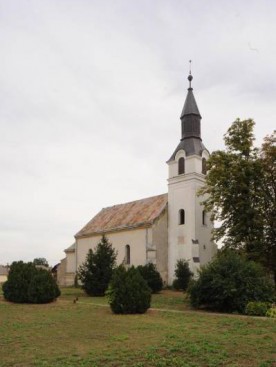The Calvinist Church – BeregsurányThe name of the settlement appeared for the first time in 1279. The present settlement was formed around a possession of the Káta clan. The members of the Surányi family, who actually owned the village, did not hold important offices. Nevertheless, there was a mansion in Surány in the 16th century. But in 1566, the Crimean Tatars plundered the village and dragged the population away. The church had been built in 1363. This single-nave church is located in the village centre. It is oriented, and its sanctuary is enclosed by several sides of a polygon. The tower is on the western side. There is a walled-up Gothic style gate at the middle of the southern frontispiece. Above the gate, one can see a circular window. This window resembles a funnel because it is narrower on the inside; furthermore, it is divided in three spherical fields. On the southern wall of the sanctuary, there are two Gothic style windows of different ages. Worshippers enter the nave, covered by a flat ceiling, at the bottom of the tower through a Gothic style gate. It is decorated with two pear profiles and a billet. The chancel arch is a lancet arch, furthermore, a barrel vault ceiling covers the western end of the sanctuary and a Gothic style rib vault ceiling its eastern end. A sedilia is carved in the southern wall of the sanctuary. At the eastern end of the sanctuary’s northern wall, one can see a pastoforium, which was eliminated by chipping the rocky material away. On the eastern end of the wall, the gate of the sacristy spanned by a lancet arch has been discovered as well. An archaeological exploration was performed, and based on that, the possibility to find 13th century details in the present edifice can be ruled out. The church had been built probably between 1335 and 1363 and modified later, only once during the Middle Ages: at the end of the 15th century. The present vaulting of the sanctuary was constructed in this period, its two windows and the tabernacle as well. This was the period when the highest-ranking official belonging to the family lived, namely János Surányi, who was mentioned in 1504 as the fortress captain (castellanus) of Erdőd. Further modifications followed later. The sacristy was demolished at the end of the 16th century, when the Calvinists used the church. A tower was added to the building and the windows of the nave were modified. The latest restorations were carried out in 1930 and around 1970, the church’s exploration was performed in 2001. |












